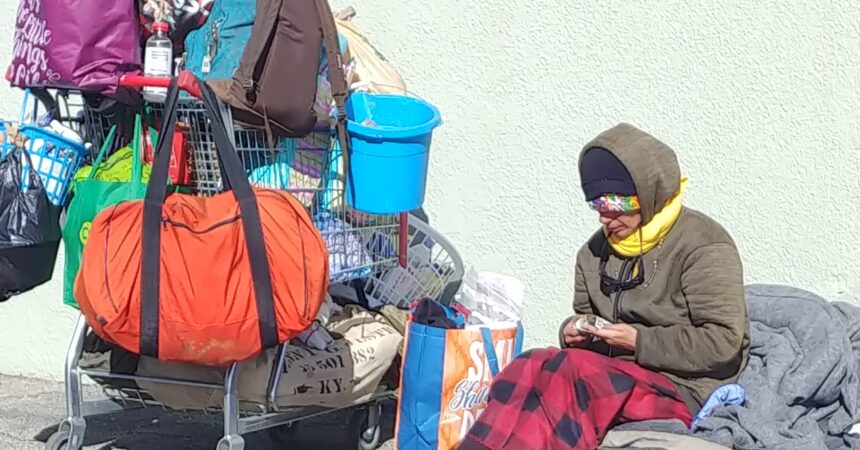
COVID-19 brings added concern over homelessness in freezing weather

Photo by St. Clair Murraine

By St. Clair Murraine
Outlook staff writer
On the second night of a recent cold snap, 13 more people showed up than the first night in search of a warmer place than where they stay in their struggle with homelessness.
The 71 people that found refuge during the first two nights of the first hard freeze of the winter might just be a sign of what’s to come when the weather worsens. Officials who organize shelter for the homeless during the winter want to get the word out, but they could also be bracing for a winter like no other.
For the first time since efforts began to bring the homeless out of the cold in 1987, homeless individuals and families are coping with a pandemic.
“I’m very concerned about the capacity of the community to provide housing for these folks,” said Rev. Brant Copeland, a retire First Presbyterian minister. “I think COVID has exacerbated the plight of people on the fringes. People who are already vulnerable are even more vulnerable under COVID.”
Copeland was instrumental in setting the groundwork for what has morphed into the Kearney Center for the homeless. The year he arrived in Tallahassee from Louisiana to take the First Presbyterian assignment, two people died from hyperthermia.
The following year, Copeland opened the basement of the church’s education building to take in the homeless. They did that for 17 nights when the temperature was 30 degrees or lower.
Eventually a group of volunteer advocates for the homeless established the Tallahassee Cold Nigh Shelter. They seek out vacant buildings, including one that was owned by the city, to make room for brining in people from the cold just for the winter months.
That continued for several years until a permanent home was found for the Tallahassee Shelter near the intersection of Macomb and West Tennessee streets. In 2015, the Kearney Center opened on Municipal Way.
While administrators have continued to work at the center daily, it has been dormant of tenants since the pandemic outbreak last spring. Meanwhile, the Kearney Center has diverted about 250 homeless people to hotels, said Audra Peoples, Senior Director of Communications and External Affairs for the Kearney Center.
“It is a sign that more people are seeking shelter and more people know about it,” Peoples said of the recent uptick in the number of people who needed shelter from the cold.
At least 11 agencies worked to coordinate housing individuals and families. Arrangements were also made to accommodate teenagers living in homelessness.
The Good Samaritan Thrift Store on North Monroe Street was used as a staging area from where Star Metro buses transported people to one of the participating partners. All of the venues operated with the guidelines set by the Centers for Disease Control and Prevention in coordination with Leon County Emergency Management, according to a statement from Big Bend Continuum of Care.
Whenever the next cold snap hits, the Kearney Center and the other support agencies will be prepared. Plans for the entire winter had been worked out several months in advance, according to Peoples.
But even with the advance planning, the issue of homelessness at winter time is much bigger than the first set of volunteers could have imagined.
“Originally we thought we would do this as a Band-Aid until more comprehensive services emerged for people living with homelessness,” Copeland said. “We had no idea in those early days that homelessness would become so entrenched.”






